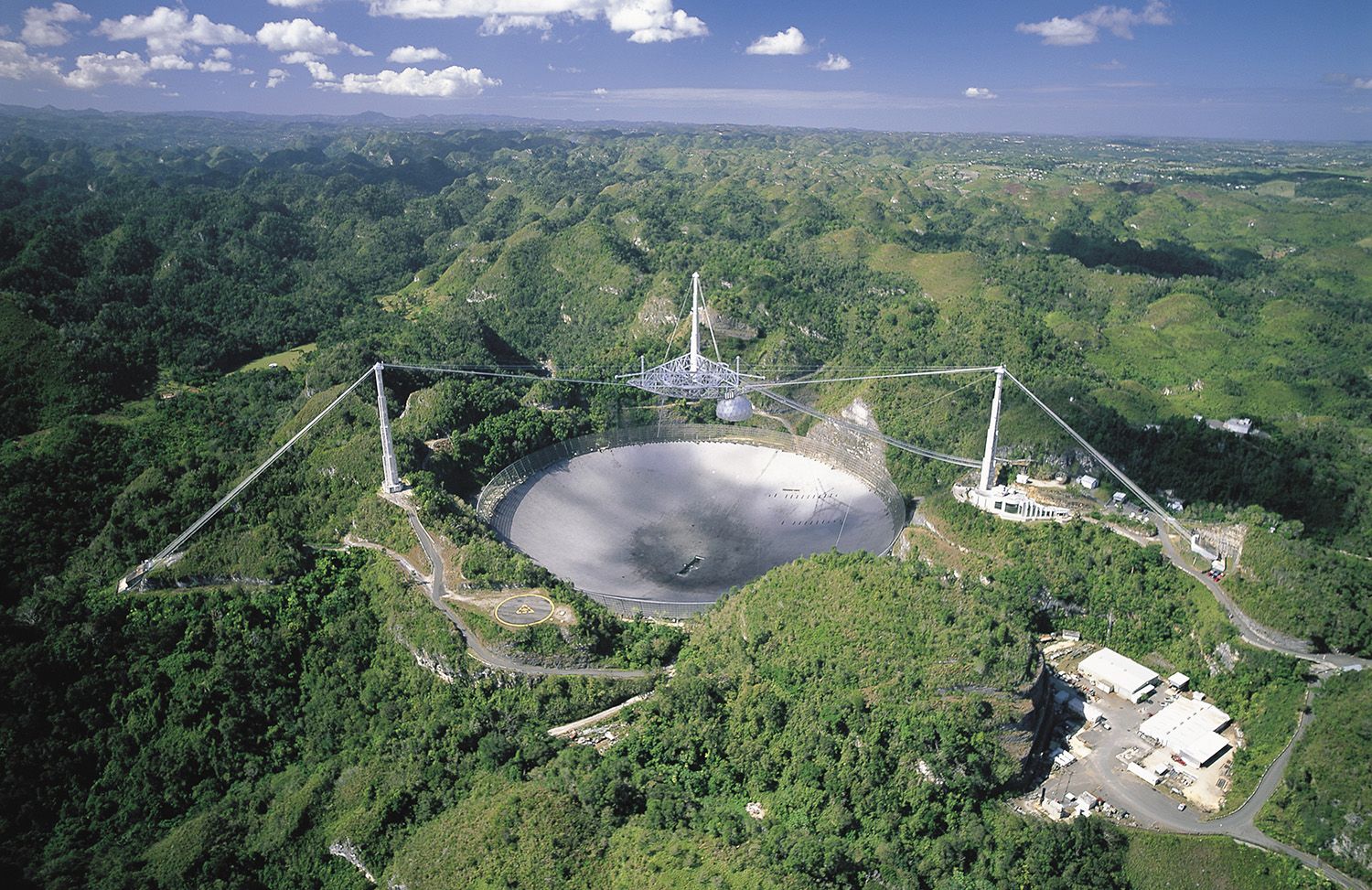Observatories have always been beacons of discovery, guiding humanity’s quest to understand the universe. From the towering heights of Mauna Kea to the dry expanse of the Atacama Desert, each observatory offers a unique vantage point and technology to explore the cosmos. The stories they tell aren’t just about distant stars, but also the relentless spirit of human curiosity. Situated on Hawaii’s Mauna Kea, the Mauna Kea Observatory isn’t just a collection of telescopes; it’s a gathering of some of the most advanced astronomical instruments on the planet. The observatory’s high-altitude location, coupled with its exceptional atmospheric conditions, makes it a premier site for infrared and submillimeter astronomy. The Gemini North telescope, one of the observatory’s jewels, uses adaptive optics to correct for atmospheric distortions, allowing astronomers to capture images with incredible clarity. Visitors to the summit often remark on the surreal sense of being on another world, as they look across a landscape seemingly untouched by time. The Arecibo Observatory in Puerto Rico, once home to the world’s largest single-aperture radio telescope, has left an indelible mark on the history of astronomy. Although its iconic structure was decommissioned in 2020, its contributions to our understanding of the cosmos continue to resonate. The observatory was pivotal in confirming the existence of neutron stars and discovering the first binary pulsar, work which earned its discoverers the Nobel Prize in Physics. Arecibo’s legacy is also cemented in popular culture, having featured in films like “Contact” and “GoldenEye,” capturing the public imagination.
In the heart of the Atacama Desert, the Very Large Telescope (VLT) stands as a testament to modern astronomical advancements. This array of four individual telescopes can operate together to form a giant interferometer, providing unprecedented resolution for studying distant galaxies and nebulae. One groundbreaking study involved the direct imaging of an exoplanet, a feat previously thought impossible. By simulating the night sky under these pristine conditions, astronomers have been able to test theories about the universe’s expansion and the properties of dark matter.
The Keck Observatory, perched on Mauna Kea’s summit, is a marvel of engineering and scientific prowess. Its twin 10-meter telescopes are equipped with some of the most sophisticated instruments available, such as the Keck Cosmic Web Imager, which has been instrumental in mapping the intricate structures of gas and stars that form the cosmic web. Researchers have used the observatory to gather data on supermassive black holes, offering insights into their mysterious nature and behavior. The observatory’s contributions to exoplanet research have also been significant, helping to identify planets that may harbor life.
Paranal Observatory, another gem in Chile’s astronomical crown, hosts the VLT and several other instruments designed to probe the universe’s deepest mysteries. Its high-altitude location provides a stable environment for observing, free from atmospheric interference. The observatory’s instruments can detect light from the most distant galaxies, allowing astronomers to peer back in time to the universe’s early days. The SPHERE instrument is particularly noteworthy for its ability to directly image exoplanets, a technique that has revealed new worlds orbiting distant stars.
At the Palomar Observatory in California, the historic 200-inch Hale Telescope has been a cornerstone of astronomical research since its completion in 1949. This iconic telescope was the largest of its kind for decades and has been instrumental in numerous discoveries, such as the identification of quasars and the study of galaxy evolution. Palomar’s adaptive optics system has allowed scientists to make precise observations of celestial bodies within our solar system and beyond, providing critical data for understanding planetary formation and dynamics.
The Green Bank Observatory in West Virginia is renowned for its pioneering work in radio astronomy. The Green Bank Telescope, the world’s largest fully steerable radio telescope, has been key in the study of pulsars and the search for extraterrestrial intelligence. The observatory’s remote location in a designated radio quiet zone ensures that its sensitive instruments can detect the faintest signals from space, offering a window into phenomena invisible to optical telescopes.
Kitt Peak National Observatory, located in the Sonoran Desert of Arizona, is a hub for optical and radio astronomy. Its collection of 24 optical telescopes and two radio telescopes supports a wide range of research initiatives. The observatory’s focus on public education and outreach has inspired countless visitors and budding astronomers, providing a platform for understanding the universe’s vastness and complexity. Kitt Peak’s solar telescope has been instrumental in studying solar flares and their impact on space weather.
La Silla Observatory, operated by the European Southern Observatory (ESO), is nestled in the foothills of the Chilean Andes. Its suite of telescopes is dedicated to a diverse array of astronomical studies, from exploring the dynamics of star clusters to uncovering the secrets of dark matter. The observatory’s HARPS spectrograph is one of the most successful instruments in the hunt for exoplanets, having discovered hundreds of new worlds since its installation. La Silla’s location provides astronomers with some of the best observing conditions in the world, making it a crucial site for advancing our understanding of the universe.
Perched atop Mount Hamilton in California, Lick Observatory has been a beacon of astronomical discovery for over a century. Its historic 36-inch refracting telescope was the first to be built on a mountaintop and played a crucial role in early studies of the solar system. Today, Lick Observatory continues to be at the forefront of research, with a focus on time-domain astronomy—studying how celestial objects change over time. The observatory’s automated planet finder has been instrumental in discovering new exoplanets, contributing to our understanding of planetary systems beyond our own.
Mt. Wilson Observatory in Southern California is famed for its pioneering role in 20th-century astronomy. The 100-inch Hooker Telescope was the largest in the world until the Hale Telescope at Palomar was completed. Edwin Hubble used this telescope to discover that the universe is expanding, a monumental finding that laid the groundwork for modern cosmology. Today, Mt. Wilson continues to facilitate research in solar physics and other areas, leveraging its historical significance and unique location.
The Atacama Large Millimeter Array (ALMA) in Chile stands as a testament to international collaboration and technological innovation. As the world’s most advanced radio telescope array, ALMA has transformed our understanding of the universe’s coldest and most distant regions. Its ability to observe molecular gas and dust in star-forming regions has provided unparalleled insights into the processes that govern the birth of stars and planets. ALMA’s discoveries have reshaped our understanding of galaxy formation and evolution, making it an indispensable tool for astronomers worldwide.
The Chandra X-ray Observatory, launched by NASA in 1999, has revolutionized our understanding of the high-energy universe. By observing X-rays emitted by the most energetic objects in the cosmos, Chandra has provided new insights into phenomena such as black holes, neutron stars, and supernova remnants. One of Chandra’s significant achievements is the discovery of X-ray emissions from the Crab Nebula, offering clues about the nature of its central pulsar. The observatory’s high-resolution images have enabled astronomers to study the complex interactions between galaxies and the intergalactic medium, deepening our understanding of the universe’s dynamic processes.
Additional Insights and Practical Tips
Choosing the Right Observatory to Visit
For anyone keen on experiencing these scientific marvels firsthand, choosing the right observatory depends on a few factors:
- Location and Accessibility: Consider proximity to your location and the ease of access. For example, Mauna Kea offers visitor tours, but reaching the summit requires careful planning due to its altitude.
- Research Focus: Some observatories specialize in optical astronomy, while others focus on radio or X-ray astronomy. If you’re interested in a specific type of celestial phenomenon, choose accordingly.
- Visitor Programs: Many observatories offer public tours and educational programs. Research these offerings to plan a visit that aligns with your interests.
What Makes an Observatory Site Ideal?
Several factors contribute to the suitability of a site for an observatory:
- Atmospheric Conditions: High altitudes and dry climates, like those found in the Atacama Desert, provide clear skies with minimal atmospheric distortion.
- Light Pollution: Remote locations away from urban centers reduce light pollution, ensuring better visibility of faint celestial objects.
- Stability: Geological stability is crucial to ensure the precise alignment of telescopic instruments.
Common Pitfalls in Observatory Visits
- Altitude Sickness: High-altitude observatories like Mauna Kea can pose health risks if visitors aren’t acclimatized. It’s essential to take precautions and recognize symptoms early.
- Weather Considerations: While many observatories are located in areas with minimal weather interference, unexpected conditions can still impact visits. Always check weather forecasts before planning a trip.
- Reservation Requirements: Some observatories require advance reservations for tours due to limited space and high demand. Ensure you book well in advance to secure your spot.
The Future of Observatories
The future of astronomical observatories looks promising, with several exciting projects on the horizon:
- Extremely Large Telescopes (ELTs): These next-generation telescopes, like the Giant Magellan Telescope and the Thirty Meter Telescope, promise to offer unprecedented resolution and sensitivity, pushing the boundaries of what we can observe.
- Space-Based Observatories: Missions like the James Webb Space Telescope aim to complement ground-based efforts by observing in infrared wavelengths, free from atmospheric interference.
- International Collaboration: As astronomy becomes increasingly global, collaborations like the Square Kilometre Array (SKA) will harness the power of multiple countries to tackle some of the universe’s biggest questions.
Astronomical observatories continue to be at the forefront of discovery, offering glimpses into the universe that challenge and inspire. As technology advances and our understanding deepens, these centers of exploration will undoubtedly reveal even more wonders, fueling our quest to comprehend the cosmos.




